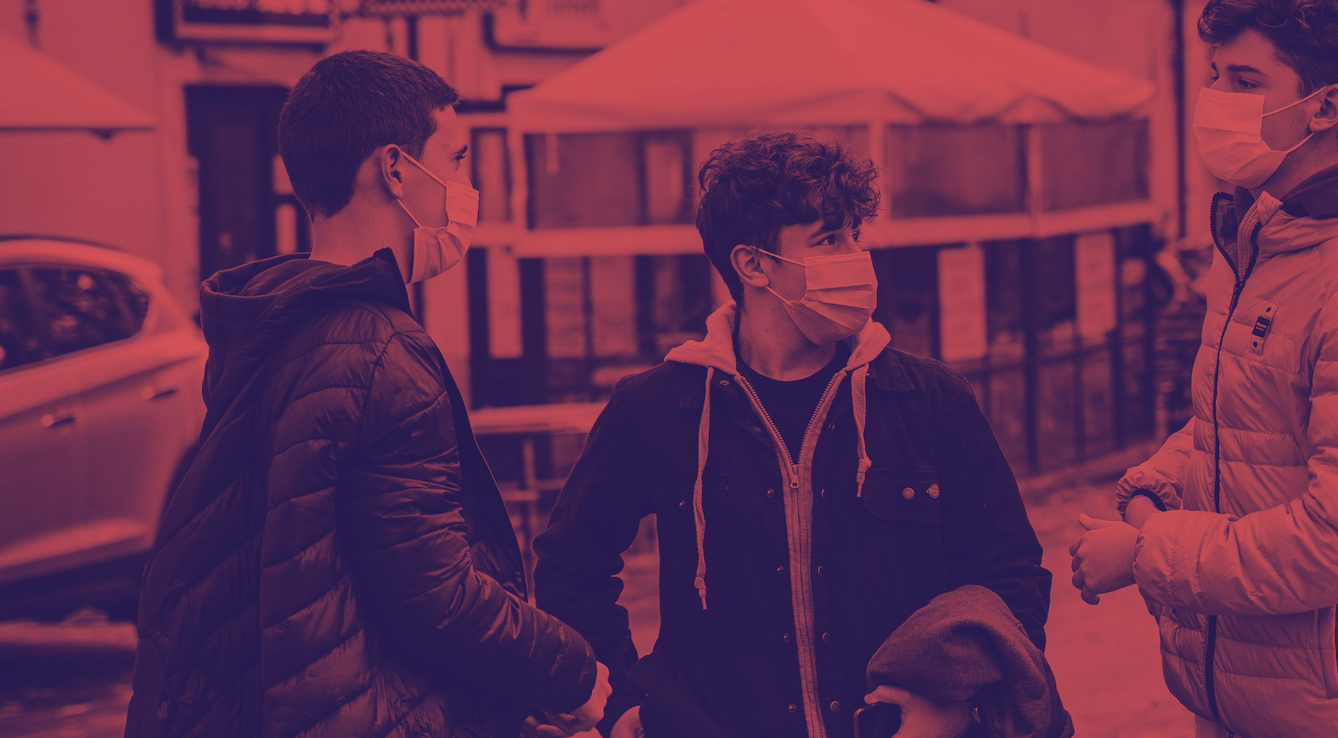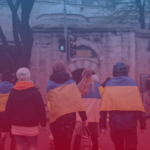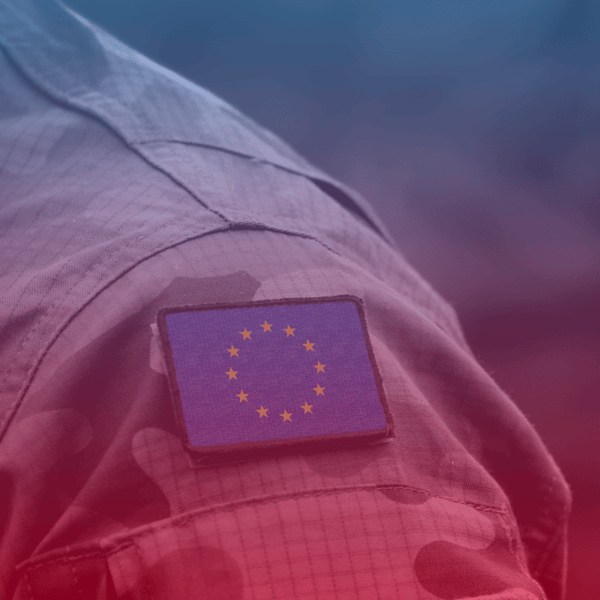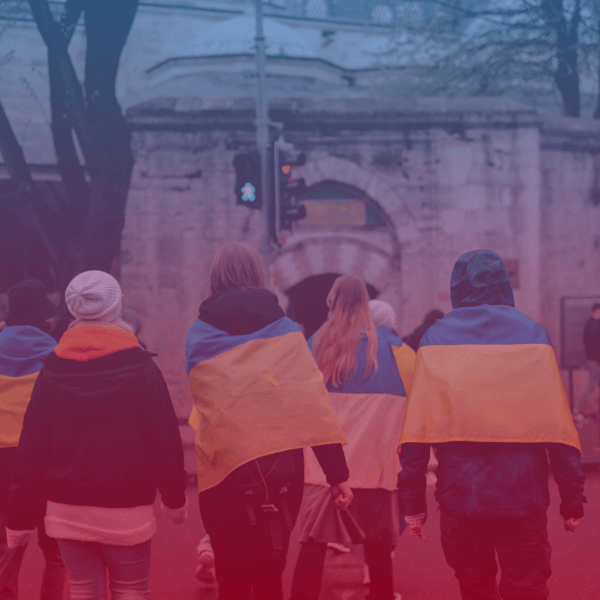
Pleven’s youth in the Covid-19 pandemic
Aparajeya Shanker, EST Ambassador to Pleven
The COVID-19 pandemic has altered much of the global landscape. When looked through the prism of its effects on the economy, healthcare and education, the monumental effects on the lives of millions of people become apparent. The history of COVID-19 in Bulgaria began in March of 2020 when the first cases of COVID-19 were reported in Pleven. Pleven is a small city of approximately 98,000 people, a significant portion of whom are the elderly. In the year that has passed, the fault lines of Pleven’s demographic challenges have manifested themselves in more ways than one. The youth of Pleven account for only 15% of the population and migration from the city with the increasingly aging population have shrunk this city’s population, a trend seen across Bulgaria. When I was first asked to consider the effects of the COVID-19 pandemic on Pleven’s youth, it became clear to me that to answer this question I must speak directly to Pleven’s youth.
Pleven’s young people are a cosmopolitan representation of youth. They are members of varying socioeconomic strata, ethnicity, nationality and physical status. In my search for a unifying answer to the question of how COVID-19 has affected Pleven’s youth, I spoke to people, stopping them in the course of their daily lives. Socially distanced and muffled through masks in the bitter Bulgarian winter, I discovered that effects on education, employment and free movement were the gravest concerns for the youth. Pleven was quick to shift education to online systems with the Medical University of Pleven leading the way by utilizing their online system of education for all medical and healthcare students. The suspension of academic programs and career orientation over the past year has inculcated in students a sense of apprehension for the future. Speaking to my teachers and colleagues at medical school, it was clear to all of us that online systems of education may suffice for now, but they are not a sustainable solution. For school-aged children and young adults training in skill development programs, going to school is both an intellectual exercise and a social one. There is of course a dire need for an auditing process that takes into account the effect of COVID-19 on education, and more importantly, policies that suit the youth effectively and equitably must be instituted.
The unfortunate conclusion of my conversations with other young people is that COVID-19 has not affected everyone similarly. The Roma community in Pleven, embattled by poverty and discrimination has found that the pandemic has only magnified their problems. The problems of economic hardship and social discrimination have only become worse over the past year according to some Roma, who have found that their struggles with poverty and discrimination are magnified by the pandemic. The lack of employment opportunities, lack of access to healthcare and the lack of housing has been made worse by the pandemic. I have also found that meaningful change is central to how the Roma recover from the pandemic.
Despite the bleak tragedies of the pandemic, there are some things we must celebrate. When solidarity was paramount, the youth of Pleven did not disappoint. Scores of young volunteers have worked throughout the pandemic to serve food and other supplies to pensioners and the vulnerable. Young people have held themselves responsible for the community of Pleven at large and have worked tirelessly through this pandemic to express solidarity with the vulnerable. Many medical students have volunteered to join the frontline of COVID-19 when called upon to do so, and now while we face an unprecedented number of cases across the country, medical students from Pleven are assisting in COVID-19 wards around the country. Medical students, along with healthcare students have initiated many education and awareness programs to help other students to continue with their education, collect funds for food and stationery supplies for schoolchildren in Bulgaria’s schools, and have stood firm in the face of great adversity. COVID-19 has made the fault lines of economic disparity clearer but has also shown that solidarity and self-sufficiency among the youth are central in times of crisis. In conclusion, there are many ways COVID-19 has affected the youth, but it has also shown us the importance of the youth in the social fabric of today’s Europe.
Relying on citizens‘ individual responsibility: The Swiss Government’s response to COVID-19
Rosa Maria Jorba Campmany, Ambassador to Switzerland
The response taken by the Swiss Government to combat the pandemic has been defined as moderated and flexible (Desson et al, 2020). During the early stages of the pandemic, Switzerland’s response aligned with many other European countries including Germany and Austria. In fact, the federal systems in Switzerland, Austria and Germany (the DACH region) proved efficient in their policy response resulting in lower mortality rates and reduced health impacts. This flexibility was crucial in order to restore economic activity (Desson et al, 2020). In Europe, despite the willingness by European Union institutions, there was little cooperation among its Member States. The strategies taken by the DACH region, however, proved to be particularly effective in controlling the rates of infection. These three countries dealt efficiently at first, offering an early response on tracking, testing and containing cases. Their approach centered around sharing basic information on how to contain the virus as well as how to rely on data collection to justify policy responses to its citizens. Other European countries could learn from Switzerland’s response in the way the Federal Office of Public Health (FOPH) gathered detailed data collection and provided daily updates on the number of tests, confirmed cases and deaths (Desson et al, 2020).
Switzerland is known for its resistant and well-equipped healthcare system and the government relies on its citizens’ innate sense of individual responsibility. The measures for containment taken by the government have been more lenient than other European regions due to the need to create a common strategy that suits the different realities of the twenty-six cantons (Robinet-Borgomano, 2020). Every canton has competencies in health matters, so, each federal government has opted for different measures on the basis of the gravity of the local situation given by the data collected on those areas. Since the end of the lockdown before June, the government has opted for less severe action than other European countries to fight the pandemic. Notwithstanding the alarming situation owing to the exponential increase in positive cases, the government has been imposing soft restrictions to its citizens. Federal governments never imposed a curfew, restrictions on traveling inside the country nor even the obligation to wear masks outdoors. This is surprising given the aggravating situation in November 2020 where it became mandatory to wear masks in busy urban areas and outdoor areas near stations, bus and tram stops (Turuban, 2020). It is no surprise, then, that Switzerland has been deemed inefficient (Girardert, 2020). In November 2020, Switzerland featured on the front page of all leading international newspapers as it became one of the world’s worst-affected countries by COVID-19 (Turuban, 2020). In fact, the Canton of Geneva, which borders France, ranked as one of the worst COVID-19 hotspots in Europe. Due to its proximity with France and the fact that many workers commute every day from France to Geneva, both governments are considering bilateral cooperation in response to the COVID-19 pandemic which will undoubtedly be beneficial for both countries (Switzerland Confederation, 2020).
During this third wave, Geneva has been applying more restrictive measures than before including the closure of bars, restaurants, universities and nonessential shops from 2nd November until 10th December 2020. Young people have arguably been hit the hardest as a result of these restrictions. Whilst they no doubt are aware of the global situation and know that Switzerland is not imposing restrictive measures comparable to other European countries, some view it as an imposed semi-confinement. The fact that universities, bars and restaurants were closed has limited social interaction and yet many Swiss still socialise outdoors without masks.
Along with many other young people across Europe, students on exchange programs at UNIGE in Switzerland now receive their education remotely. Many have decided to stay in their respective countries as UNIGE has already decided that exams in February 2021 will be in an online format. Young people coming to Switzerland to study from a high risk infected zone were also obliged to adhere to a 10-day quarantine on arrival in the country owing to imposed entry restrictions at Swiss borders and airports.
Although the future is still unclear, there is light at the end of the tunnel. On 23rd December 2020, the vaccination program in Switzerland started ahead of most European countries (Foreign Policy, 2020). All in all, the measures that the Swiss government issued to handle the COVID‐19 pandemic in Switzerland have been varying during the different waves of the pandemic and yet have always relied upon expertise and detailed data collection. The Swiss Government’s use of influence rather than coercive power, relying on citizens’ voluntary compliance of the measures, has contributed to Switzerland becoming one of the world’s worst-affected countries by COVID-19.
References:
BURCI, G; HASSELGARD-ROWE, J. (2020). “Switzerland’s Response to the COVID-19 Pandemic”. Harvard Law. [Online]. Available at: https://blog.petrieflom.law.harvard.edu/2020/05/14/switzerland-global-responses-covid19/ Accessed 4 Jan. 2020.
DESSON, Z; LAMBERTZ, L; WILLEM, J; FALKENBACH, M; KAUER, L. (2020). “Europe’s Covid-19 outliers: German, Austrian and Swiss policy responses during the early stages of the 2020 pandemic.” Health Policy and Technology. Volum 9, Issue 4, December 2020, Pages 405-418.
DE WRECK, J. (2020). “Switzerland Is Choosing Austerity Over Life”. Foreign Policy. [Online]. Available at: https://foreignpolicy.com/2020/11/10/coronavirus-switzerland-is-choosing-austerity-over-life/ Accessed 30 Dec. 2020.
Federal Office of Public Health (FOPH). “Coronavirus: Situation in Switzerland”. [Online]. Available at: https://www.bag.admin.ch/bag/en/home/krankheiten/ausbrueche-epidemien-pandemien/aktuelle-ausbrueche-epidemien/novel-cov/situation-schweiz-und-international.html. Accessed 30 Dec. 2020.
GIRARDET, E. (2020). “Switzerland and the pandemic: Does the economy matter more?” Global Geneva. [Online]. Available at: https://www.global-geneva.com/switzerland-and-the-pandemic-does-the-economy-matter-more/. Accessed 30 Dec. 2020.
ISLAMI, J; SCHMID, K. (2020). “Swiss COVID-19 Response Timeline, Status and Outlook”. Fragomen. [Online]. Available at: https://www.fragomen.com/insights/blog/swiss-covid-19-response-timeline-status-and-outlook Accessed 4 Jan. 2020.
ROBINET- BORGOMANO, A. (2020). “Europe Versus Coronavirus – Switzerland and the Principle of Responsibility”. Institute Montaigne. [Online]. Available at: https://www.institutmontaigne.org/en/blog/les-etats-face-au-coronavirus-la-suisse-et-le-principe-responsabilite Accessed 30 Dec. 2020.
SAGER, F. (2020). “Switzerland’s COVID‐19 policy response: Consociational crisis management and neo‐corporatist reopening.”[Online]. Available at: https://onlinelibrary.wiley.com/doi/full/10.1002/epa2.1094 Accessed 15 Jan. 2020.
TURUBAN, P. (2020). “Are the latest Swiss measures enough to fight the second Covid wave?” Swiss info. [Online]. Available at: https://www.swissinfo.ch/eng/are-the-latest-swiss-measures-enough-to-fight-the-second-covid-wave-/46135900 . Accessed 30 Dec. 2020.
The response of your government to the COVID-19 pandemic, and how the lives of youth have been affected in your country
Annabel van Holst, Ambassador to the Netherlands (Leiden)
In my fifth year of studying in The Netherlands, Leiden went from the most gezellige studentcity, to a quiet city in lockdown. Being one of the students that were exiled to their student rooms, this is my experience of the COVID-19 and the response of the Dutch government.
On March 16th, 2020, Prime-Minister of the Netherlands Mark Rutte addressed the Dutch people from his office in ‘het Torentje’ for the first time since 1973. Similar to other European countries, weekly or semi-weekly press-conferences followed in which the governmental updates regarding Covid-19 were presented. In February, when Europe became familiar with the virus and Dutch people were already being repatriated by the government, the festive season of Carnival was in full swing in the Dutch province Brabant, which became a hotbed for the spread of Covid-19. Images from Lombardia and Madrid came trickling in and on March 6th as the first Dutch Corona-related death occurred. Slowly, more severe measures were employed and the Cabinet’s ‘intelligent lockdown’ was implemented. Events were cancelled, social distancing was implemented and shaking hands became forbidden. Soon, the closing of schools and Universities followed, and students all over the country were exiled to their bedrooms and all social activities were suddenly exclusively Zoom-related.
Because of the high infection rate among youth and students, Mark Rutte explicitly addressed this target group and urged young people to critically think about their actions. Under the shibboleth of ‘Slimmer Chillen is Corona Killen’ a nation-wide campaign was launched by Ferd Grapperhaus, the Minister of Justice and Security, to encourage youth and students to try and hang out with their friends in a clever way. Besides being fairly awkward, this paternal initiative did not turn out to be very successful and illegal get-togethers were still of frequent occurrence. It is not uncommon for Dutch people to live in houses with 10+ students and thus, a substantial amount of creativity was necessary to keep living together safely. Student houses implemented inventive social-distancing rules or even completely isolated themselves collectively.
After a summer in which the measurements were cautiously alleviated, the partial lockdown was implemented. Drinking a beer on the terraces outside as possible, however, face masks became mandatory in more places and the Corona-infection alarm App was introduced. Whilst King Willem-Alexander of the Netherlands enjoyed a junket to Greece, students in the Netherlands dreaded another year of studying from their bedrooms. Career prospects, job- and intern opportunities were inevitably compromised and a vast amount of students felt insecure about their future.
At the time of writing, the vaccinations in Europe are in full swing. Surprisingly, the Netherlands was the last country to start with the vaccinations and this has aggregated a lot of criticism. The EU’s recovery fund has yielded hardly any response and is not a topic of daily debate among young people at the moment. The response of the Dutch government to the COVID-19 pandemic is experienced by many students as contradictory, hypocritical, or downright confusing. Likewise, the virus itself is all of these things and we can only wait and hope to see more positive developments soon so that we can start making exciting plans for the future again. And hopefully, before we know it, the festivities are back in the Lowlands.
Dealing with COVID-19 – Youth’s perspectives and actions in Hungary
Ibrakhim Saifullaiev, Ambassador to Hungary
The COVID-19 pandemic has become a kind of test for young people in Hungary. Restrictions on communication, drastic changes in lifestyle, learning and employment form, community activities, discomfort for children, young families, and many other changes have shown the vulnerability of young people due to the pandemic caused by the COVID-19 coronavirus.
Since the outbreak of the pandemic, the government introduced a set of restrictions. Including a curfew from 8 p.m. to 5 a.m., closing restaurants and bars, a comprehensive ban on events, and a requirement for high schools and universities to switch to e-learning to slow down the spread of the coronavirus. It is believed that restrictions saved the lives of many people in Hungary.
The policy responses taken to fight the pandemic have resulted in an economic shutdown, leaving many citizens out of work with young people. In the context of the response of youth to the measures taken by the government, young people mostly expressed the most significant concern about the impact of COVID-19 on mental well-being, employment, disruptions to education, as well as a limitation to individual freedoms. The role of the European Union in response to the pandemic in Hungary was controversial, but at the same time, the Recovery Fund was welcomed by youth because it helps create new jobs for young people as well as opens new opportunities for them.
Administrative Hurdles Plague Spain’s Covid-19 Effort
Joel Christoph, Ambassador to Spain (Barcelona)
BARCELONA – Spain marked a somber start to 2021 with over 56,000 deaths from COVID-19 (10th worldwide), and over 2.5 million infections (8th worldwide) in a country of 47 inhabitants (JHU CSSE, 2020).
Despite some of the most severe public closures and travel bans – an estimated 71.3 on a scale from 0 to 100 (strictest) in Oxford’s Government Response Stringency Index (OurWorldInData, 2020), Spain continues to record over 18,000 new COVID-19 cases every 24 hours (RTVE, 2020).
This has led to Spain having western Europe’s highest rate of total excess deaths per million, as well as relative to historical averages for the same dates in recent years (Giles, 2021). As a result, the whole of Spain, except the Canary Islands, remains at “high risk” and six out of seventeen provinces exceed one infection per one hundred inhabitants (RTVE, 2020).
Spain has experienced a number of challenges in handling the COVID-19 crisis. First, the initial surge of infections in March 2020 put the Spanish healthcare systems at risk of catastrophic collapse (Wise, 2021).
Subsequently, following a drastic months-long lockdown, Spain struggled to implement contact tracing systems over the summer of 2020. Relaxing social distancing restrictions before adequate contact tracing systems were in place damaged the health systems’ ability to cope with the resultant rise in infections. For instance, after the official end of Spain’s lockdown in June 2020, the nationwide infection rate increased more than fifty-fold as parts of the country lacked the public health and primary care facilities to control local outbreaks using targeted measures (Neville & Dombey, 2020).
Finally, Spain has also experienced problems compiling national data since Covid-19 outbreaks began, partly as the country’s 17 regions, which have primary responsibility for health policy, use differing methodologies (Mallet & Peel, 2021).
Notwithstanding the health situation, Spain will have to manage another major challenge in 2021. Along with Italy, Spain is one of the two largest recipients of the €750bn “Next Generation EU” Covid-19 recovery fund that the European Commission will begin disbursing from mid-2021. Its aim is to jump-start economies after lockdowns and to fund long-term investment projects and encourage growth (Khan, Ghiglione, & Mount, 2021).
Spain will receive up to €140bn in grants and loans from the recovery fund between 2021 and 2026. The country’s socialist-led coalition government plans to spend approximately 70% of the €72bn in grants from the recovery fund between 2021 and 2023 on digital transformation and green investments (Khan, Ghiglione, & Mount, 2021).
Nevertheless, experts have warned that Spain and Italy face administrative bottlenecks in spending unprecedented EU financial support over the next years and that they have a poor record in spending EU funds due to bureaucratic and administrative hurdles (Khan, Ghiglione, & Mount, 2021). According to the European Commission, Spain had the worst rate for spending EU structural investment funds from 2014 to 2020 (European Court of Auditors, 2020).
Moreover, Spain’s large and compartmentalised bureaucracy consists of 8,000 entities distributed across national, regional and local levels, and its complex public contracting law adds to an average lag of one year to adjudicate a contract (Khan, Ghiglione, & Mount, 2021).
In response, Spain’s government passed a decree to address its challenges in absorbing and spending EU funds efficiently. The measures aim to reform the public administration, increase public-private collaboration and increase flexibility to spend under special contracting rules. Even so, Spain has previously made large infrastructure investments in highways and high-speed rail. This suggests that the Spanish government will need to manage a large number of smaller-scale and more intricate projects in digitalisation and green technologies, which may require considerably more time and work to absorb effectively than traditional infrastructure projects (Khan, Ghiglione, & Mount, 2021).
References
European Court of Auditors. (2020). Annual report on the implementation of the EU budget for the 2019 financial year: Annex 2.1. Luxembourg: European Court of Auditors. Retrieved from https://www.eca.europa.eu/Lists/ECADocuments/annualreports-2019/annualreports-2019_EN.pdf
Giles, C. (2021, January 19). UK excess deaths since start of pandemic surpass 100,000, data suggest . Retrieved from Financial Times: https://www.ft.com/content/5f7b58fb-97ad-4fef-bbc9-b71d328c6700
JHU CSSE. (2020, January 26). Coronavirus (COVID-19) (2019-nCOV). Retrieved from COVID-19 Dashboard by the Center for Systems Science and Engineering (CSSE) at Johns Hopkins University (JHU) : https://gisanddata.maps.arcgis.com/apps/opsdashboard/index.html#/bda7594740fd40299423467b48e9ecf6
Khan, M., Ghiglione, D., & Mount, I. (2021, January 5). EU recovery plan faces bottleneck, economists warn . Retrieved from Financial Times: https://www.ft.com/content/9fb2f320-6a37-421d-b738-196d3e736bae
Mallet, V., & Peel, M. (2021, January 11). EU races to control Covid variant . Retrieved from Financial Times: https://www.ft.com/content/05cd83ad-0a14-444a-b74a-ac7561a59b10
Neville, S., & Dombey, D. (2020, October 29). Surge in Covid-19 cases exposes limits of test and trace programmes . Retrieved from Financial Times: https://www.ft.com/content/84f53141-5495-447c-b857-ae00526c98c6
OurWorldInData. (2020, January 21). COVID-19: Government Stringency Index. Retrieved from OurWorldInData.org: https://ourworldindata.org/grapher/covid-stringency-index
RTVE. (2020, January 26). Mapa del coronavirus en España. Retrieved from RTVE.es: https://www.rtve.es/noticias/20210126/mapa-del-coronavirus-espana/2004681.shtml
Wise, P. (2021, January 20). Portugal suffers surging Covid-19 deaths after mastering first wave . Retrieved from Financial Times: https://www.ft.com/content/fbeb622e-0a69-4f5c-a6fe-6653a72d2377
Albania – European Union, the support during Covid-19
Renis Meta, Ambassador to Albania
Still not recovering from the socio-economic crisis left behind by the devastating earthquake in November 2019, and in the first steps of the reconstruction process, Albania was facing a new challenge. Different countries introduced various policies regarding closure measures. While reporting its first case of COVID-19 on March 8, 2020, the Albanian government took strict measures for a complete closure during the first weeks of the pandemic. (United Nations Albania, 2020, p.5; EU Commission, 2020, p. 10).
In the face of such an unprecedented situation, the Albania government-imposed preventive and precautionary measures to avoid overload of the health system and to keep the numbers at low levels as soon as the first case of COVID-19 was identified (IPH & MHSP, 2020).
The COVID-19 pandemic caused an unprecedented challenge for healthcare systems worldwide, fortunately, the Albania healthcare system hasn’t collapsed so far. These strong austerity measures resulted in a slower spread of COVID-19 and keeping low infection rates compared to other countries in the region. While these closures were intended to prevent the spread of the virus within institutions and prevent carriage to vulnerable individuals (IPH & MHSP, 2020), these closures had a widespread socio-economic implication for the Albanian population. Placing a heavy burden on the population, in particular on those working informally, the daily wagers and the self-employed, and marginalized communities (United Nations Albania, 2020, p.5, 13, 21). According to the UN (2020), Albania will face “economic and social hardship, as well more restricted fiscal space, in the context of dwindling global financial resources (United Nations Albania, 2020, p.5).”
Moreover, while facing post-2019 earthquake challenges, the tourism sector was one of the hardest-hit by the outbreak of COVID-19. As a direct consequence of COVID-19, the restriction of movement and the closure of tourism-oriented businesses resulted in an economic slowdown for the Albanian economy during 2020. The recent data from World Bank show that the employment and gross domestic product are expected to shrink significantly, and external and fiscal balances deteriorate (World Bank, 2020). According to World Bank , if the spread of the pandemic will slow down, Albania may have a gradual economic recovery in 2021, due to the resumption of the earthquake reconstruction process and the recovery of the global economy (World Bank, 2020).
Also, COVID-19 affected all levels of the education system in Albania, as pre-school to higher education in Albania was interrupted on March 9, 2020. The impact of the pandemic in the long-term to the education systems is yet to be seen (United Nations Albania, 2020, p.9).
Albania – European Union, the support during Covid-19
The European Union is the biggest provider of financial assistance to Albania and the biggest trading partner. In January 2020, trade with the EU countries represented 65.4 % of total trade for Albania This trading partnership was hit hard by the pandemic and restraint measures (European Union, 2020).
Albania was assisted from the EU through IPA 2014-2020, with €50.65 million in bilateral assistance to cover urgent health needs and economic and social recovery. In April 2020, through the United Nations office, the EU allocated Albania a €4 million fund, for the fight against COVID-19, to purchase medical equipment and personal protective equipment for medical staff. €46 million consisted of budget support to assist the social and economic recovery (European Commission, 2020, p.52).
The Union also appointed €180 million in favorable terms loan, which was approved by the Commission in Macro-Financial Assistance for Albania. The aim of these funds was to contribute to enhancing macro-economic stability to allow resources to be directed towards protecting citizens and minimize the consequences of the pandemic (European Commission, 2020).
In December 2020, the European Commission adopted a €70 million package to help fund the access of Western Balkans partners to COVID-19 vaccines (European Commission, 2020).
During the press conference that was held for the occasion of Europe Day, on 9 May, 2020, with the presence of the Albania Prime minister Edi Rama and the Ambassador of the European Union Delegation in Tirana, Luigi Soreca, the close relationship between the Union and Albania was noted between two sides. Ambassador Soreca underlined the good relations between that both sides and the solidarity that Albania showed to its EU friends, to the EU member states, by sending 30 doctors and nurses to Italy, at the time the worst-hit country in Europe amid the COVID-19 pandemic (Albanian PM Newsroom, 2020; European Commission, 2020, p. 62).
No country will be able to exit this crisis alone, the European Union being the biggest contributor to Albania as well in the Balkan must continue to support Albania and the region, therefore good cooperation must continue and progress with concrete steps from the EU.
References
European Commission. (2020). Albania 2020 Report.
Available at: https://ec.europa.eu/neighbourhood-enlargement/sites/near/files/albania_report_2020.pdf
Last Accessed: 28.01.2020
Institute of Public Health (IPH) & Ministry of Health and Social Protection (MHSP). (2020).
COVID – 19 Action Plan for Albania Prevention, Preparation and Response Against COVID-19.
Available at: https://shendetesia.gov.al/wp-content/uploads/2020/03/Covid_AL-spreads.pdf
Last Accessed: 28.01.2020
World Bank. (2020). An Uncertain Recovery: Albania Country Note (Albanian). Western Balkans regular economic report; no. 18 Washington, D.C.
Available at: http://documents.worldbank.org/curated/en/636901603297411262/An-Uncertain-Recovery-Albania-Country-Note
Last Accessed:15.01.2020
United Nations Albania. (2020). UN Albania Covid-19 Socio-Economic Recovery & Response Plan.
Available at: https://www.unicef.org/albania/media/3101/file/UN%20ALBANIA%20COVID-19%20SOCIO-ECONOMIC%20RECOVERY%20&%20RESPONSE%20PLAN.pdf
Last Accessed: 13.01.2020
Webpage: World Health Organization.
Available at: https://covid19.who.int/region/euro/country/al
Last Accessed: 16.01.2020
Webpage: Reuters.com
Available at: https://www.reuters.com/article/us-health-coronavirus-albania-italy/albania-flies-30-doctors-to-italy-to-help-with-coronavirus-crisis-idUSKBN21F0PG
Last Accessed: 16.01.2020
Webpage: Albanian Prime Minister’s Newsroom. (2020).
Available at: https://kryeministria.al/newsroom/soreca-be-plan-ekonomik-dhe-investimesh/
Last Accessed: 16.01.2020
Webpage: European Union. (2020). Fact sheet.
Available at: https://ec.europa.eu/neighbourhood-enlargement/sites/near/files/near_factograph_albania.pdf
Last Accessed: 13.01.2020

 THE DIGITAL EURO: Unlocking its potential
THE DIGITAL EURO: Unlocking its potential  SAFE but Not Secure: The Challenge of a Common Defence and EU’s Unity
SAFE but Not Secure: The Challenge of a Common Defence and EU’s Unity  Blind Spots in AI Governance: Military AI and the EU’s Regulatory Oversight Gap
Blind Spots in AI Governance: Military AI and the EU’s Regulatory Oversight Gap  Selective Solidarity: The Desecuritisation of Migration in the EU’s Response to the Ukrainian Refugee Crisis
Selective Solidarity: The Desecuritisation of Migration in the EU’s Response to the Ukrainian Refugee Crisis 


